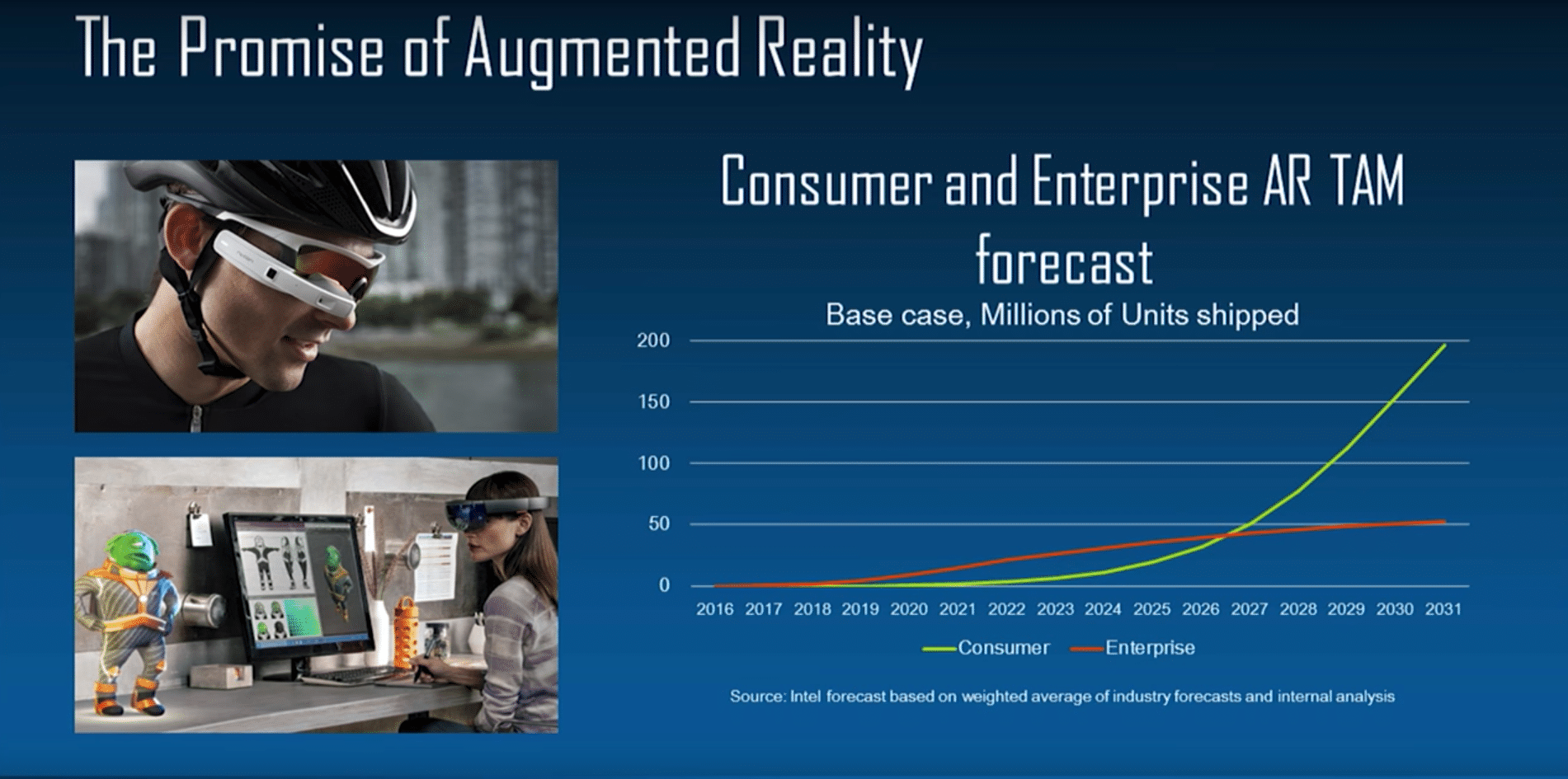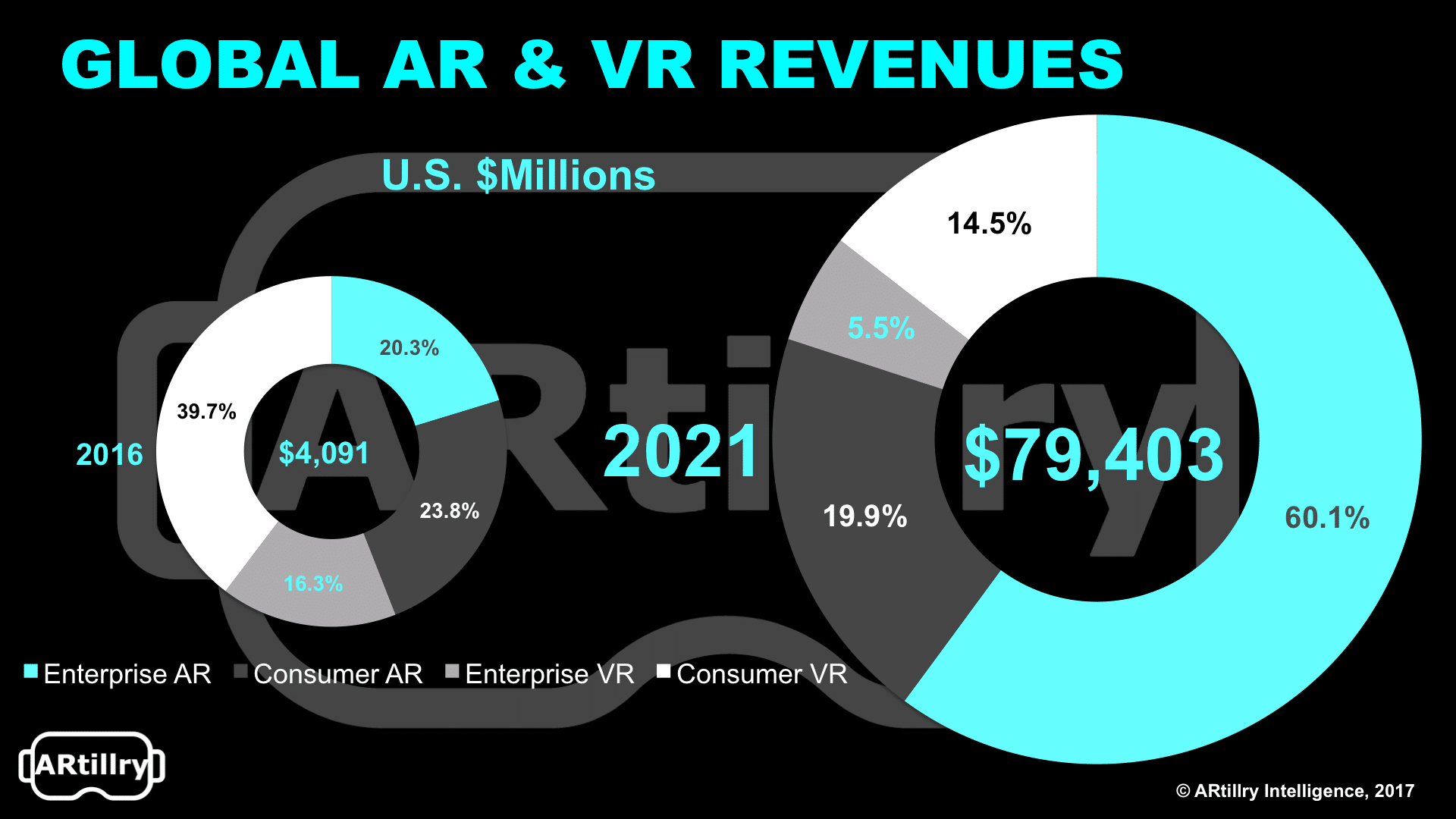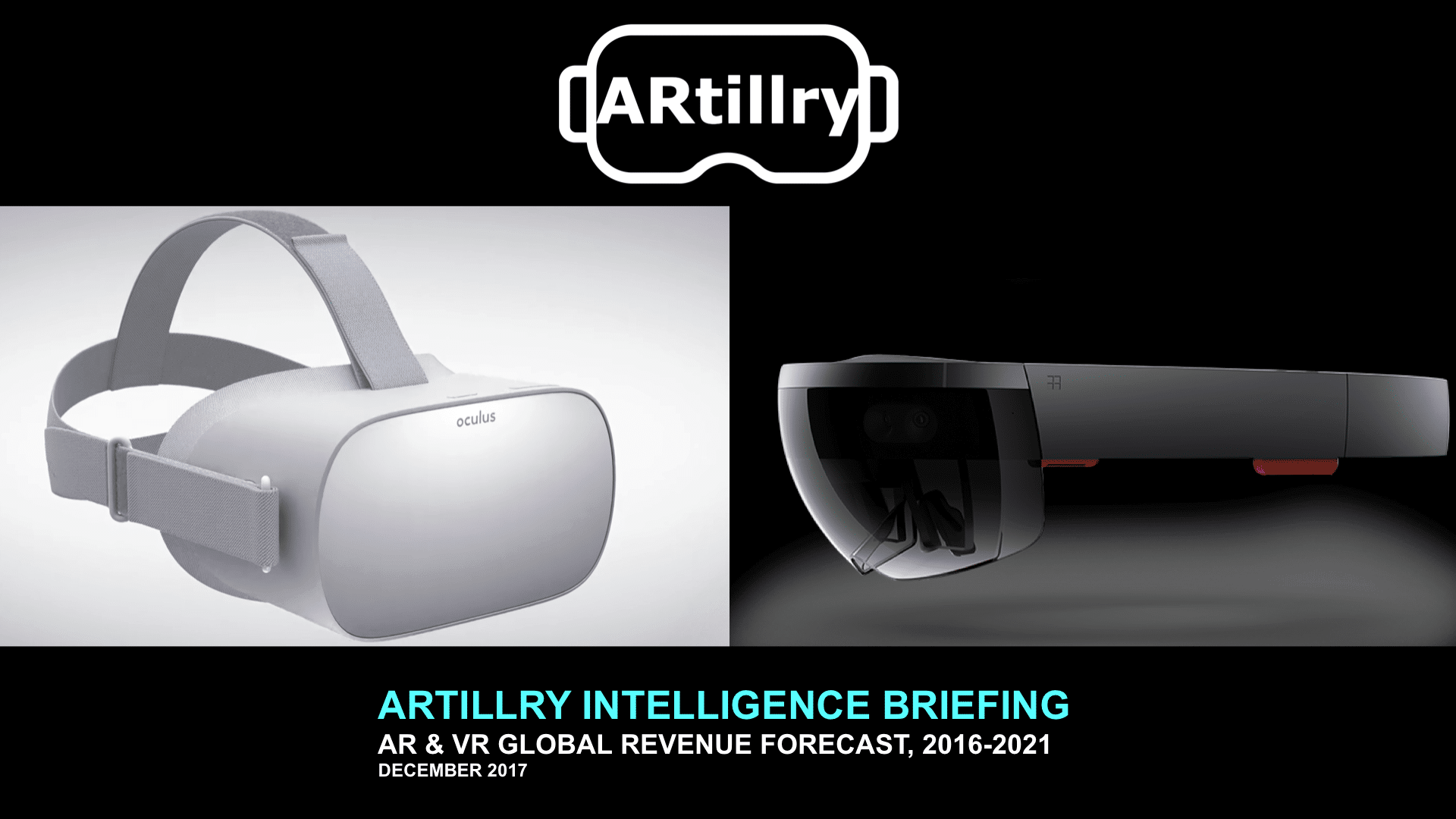
AR’s nearer term revenue scale is in the enterprise, for all of the reasons we’ve examined. And Enterprise AR will also take the leading revenue position among XR sub-sectors this year and throughout ARtillry’s forecast timeframe.
But what about further off? Consumer AR glasses could actually eclipse enterprise counterparts in the next decade. Specifically, Intel reports that consumer AR glasses will inflect around 2027 with 50 million unit sales, and then grow to about 200 million by 2031 (see below).

This long-term outlook is of course purely speculative, but is conceptually important. The rationale is that enterprise AR — though opportune in the near term — will reach a saturation point. Consumer AR conversely has a higher ceiling (6 billion humans on the planet).
“In the long run, we know that the consumer market is going to far outpace the potential for enterprise,” said Intel’s Chris Croteau at an ARiA event. “There are a finite number of jobs on the planet and many of those jobs are being optimized and automated. So our ability to capture that market is a fixed target. But humans keep reproducing, and technology keeps spreading.”
AR’s glasses dont’ pass stylistic requirements (size, weight, etc.) for consumer markets. But the onward march of Moore’s law will bring us mainstream-viable consumer AR glasses in the next decade. That could start with the halo effect brought by Apple’s rumored glasses circa 2020.

Once those hardware goals are reached, it becomes a question of killer apps and utility. And from there, Intel is right that consumer market scale could outpace the enterprise. Meanwhile, consumer markets are being acclimated (and developers being trained) through mobile AR.
We’ll be watching closely and course-correcting our own projections as the market develops, and as all of the above unfolds. There will be a lot to see.
For a deeper dive on AR & VR insights, see ARtillry’s new intelligence subscription, and sign up for the free ARtillry Weekly newsletter.
Disclosure: ARtillry has no financial stake in the companies mentioned in this post, nor received payment for its production. Disclosure and ethics policy can be seen here.
Header image credit: Microsoft

